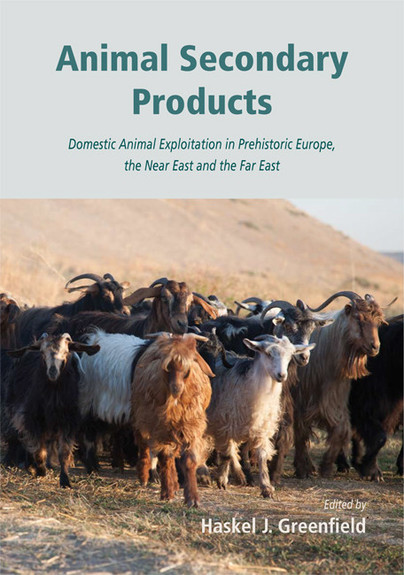Google Books previews are unavailable because you have chosen to turn off third party cookies for enhanced content. Visit our cookies page to review your cookie settings.
Animal Secondary Products (Hardback)
Domestic Animal Exploitation in Prehistoric Europe, the Near East and the Far East
Imprint: Oxbow Books
Pages: 256
Illustrations: b/w illustrations
ISBN: 9781782974017
Published: 24th September 2014
Script Academic & Professional
Pages: 256
Illustrations: b/w illustrations
ISBN: 9781782974017
Published: 24th September 2014
Script Academic & Professional
You'll be £14.95 closer to your next £10.00 credit when you purchase Animal Secondary Products. What's this?
+£4.99 UK Delivery or free UK delivery if order is over £40
(click here for international delivery rates)
Order within the next 3 hours, 3 minutes to get your order processed the next working day!
Need a currency converter? Check XE.com for live rates
(click here for international delivery rates)
Order within the next 3 hours, 3 minutes to get your order processed the next working day!
Need a currency converter? Check XE.com for live rates
Animal Secondary Products investigates domestic animal exploitation and the animal economy from the Palaeolithic to the Bronze and Iron Ages across Eurasia (Europe, Near East, Siberia and China). Incorporating current zooarchaeological theory and cutting-edge methodological developments, it critically assesses Andrew Sherratt’s concept of a Secondary Products Revolution that proposed that a package of new subsistence practices and technologies swept across much of Eurasia at the end of the Neolithic, which triggered large-scale changes in economies and settlement across the landscape. This model argues that these changes were associated with a genuine shift from an emphasis upon domestic animals for their primary (meat hide, bone) products to a more diversified exploitation pattern which included their secondary (milk, wool, traction) products. Sherratt’s model attempted to conceptualise the changes between the Neolithic and Bronze Age that dramatically transformed the nature of animal exploitation strategies, cultivation practices, land management strategies, nature of settlement, and political and economic organization in Europe and the Near East that set the stage for the evolution of historic land use and animal exploitation patterns. Though setting the parameters for debate within the discipline for over 30 years, science has moved on and many kinds of new data, methods and techniques have been proposed since then that allow greater insights into these issues.In this volume, thirteen papers present a holistic discussion of Sherratt’s concept and investigate the theoretical development in our understanding of the origins of milking, wool production, transhumance, as well as examining the need for a contextualised zooarchaeological analysis and harvest profiles from various international sites in order to reconstruct the nature of Secondary Products exploitation. It also extends the secondary products concept across the Old World into Siberia and China and back in time to the Palaeolithic with the domestication of dogs. Through reviewing artefacts and textual evidence, the book bridges an important divide by cross-referencing statistical and scientific data with more traditional archaeological techniques and demonstrates the necessity of using many techniques to analyse data before interpreting patterns as exploitation practices. Offering fresh insight into the development of civilisation from the Neolithic and Bronze and Iron Ages in the Near East, Europe, and China, this book will be important for archaeozoologists and prehistorians.
Customers who bought this title also bought...
Other titles in Oxbow Books...
















